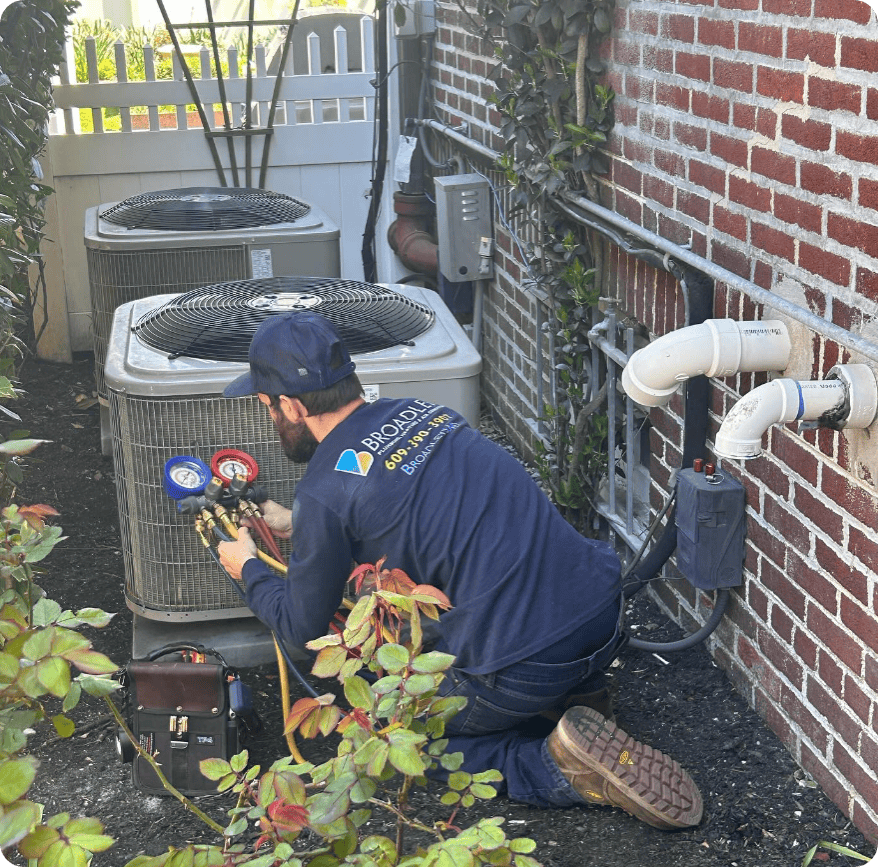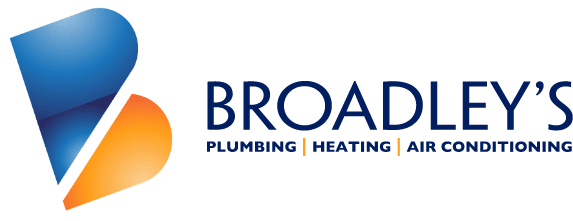New Refrigerants For Air Conditioners In 2025: What to Know (and Do) about the New Mandate

There’s a big change coming in the refrigerants used in HVAC systems in 2025, and you may have been hearing about them already. To reduce the impact of global warming and meet new environmental standards, new HVAC systems will now be designed to use refrigerants with a lower global warming potential (GWP). We are sure you have questions, so we put together some FAQs that will help answer some of the big ones.
Broadley’s has been working with air conditioning systems for decades, and have been closely watching the regulation changes coming for years. In 2020, it was R-22 that stopped being manufactured and imported into the U.S. Now the list of refrigerants is expanding, and we want to make sure that you are informed on the changes coming, why they are happening and how it impacts you and your home.
If you want to talk to someone about your air conditioning, just give us a call at (609) 390-3907, or contact us online. Our technicians can come take a look at your air conditioning system and let you know if it is time for a replacement, or if you simply need regular service for optimal cooling in your home or business!
What is the Government Mandate & Why Are Freon And Puron Being Phased Out?
As part of the American Innovation and Manufacturing Act of 2020, new requirements were established for refrigerants used in AC systems and heat pumps, to use less harmful chemicals, and to reduce the impact of refrigerants on global warming.
The government HVAC refrigerant mandate, initiated by the Environmental Protection Agency (EPA) and set to take effect on January 1, 2025, will begin to phase out production of R-410A refrigerant in and halt R-410A equipment production in residential-type HVAC systems, replacing it with R-454B and R-32, depending on the manufacturer.

What you need to know:
If you need to replace your Air Conditioning in the next year, ask about the equipment being installed and what refrigerant it uses.
Manufacturers are required to switch to refrigerants with lower global warming potential by January 1, 2025. These new refrigerants are often referred to as A2L’s. While no new whole home residential systems using the old refrigerants will be manufactured after Jan 1, 2025, they can still be installed until January 1, 2026.
This change in refrigerant will mean a change in design of systems and safety features required. This mostly impacts us, your HVAC company, as we learn how to install these new systems and their added safety features to help reduce refrigerant leaks. Manufacturers will be adding leak detector sensors to new equipment, which will identify if any leaks have developed and be able to repair them quickly.
As this change over occurs, there could be supply chain issues that arise. As the equipment and refrigerant changeover occurs, we do not yet know what that will do to the supply and demand of new systems. Based on what happened when they phased out Freon a number of years ago, there could be temporary spikes in pricing based on availability of equipment during the transition.
Is Your Old AC Costing You Money?
What Does the 2025 Refrigerant Change Mean For My Current Air Conditioner?
If you have had a system installed in the past few years, this likely means very little for you. Your current air conditioner is not being outlawed, recalled or anything else – It’s just fine!
Service parts and refrigerants will remain readily available if you own an HVAC system using R-410A. However, the phasing out process will make new R-410A systems increasingly difficult to find, as current stock dwindles, and availability may ultimately force you to transition to a system operation with the new refrigerant.
If you have an older system using Freon or Puron, those refrigerants are being phased out and will no longer be manufactured. Just like when freon, also known as R-22 first started to be phased out in 2010, it will begin to become more difficult to get the refrigerant your system uses and it will start to become more expensive as supplies decrease.
This means if you have an older system, repairs and “recharges” if you get a refrigerant leak are likely to get more expensive, and this will be a factor to consider when it’s getting to be time to replace your air conditioning.
The new rules have no implication for your current system and you can continue to enjoy it and get it serviced until it reaches the end of its lifespan.
Repair Or Replace Your AC System?
If you have an older air conditioning system that uses these old refrigerants, it means you may have to start thinking about a replacement. Like we said already, if your AC is working fine and having no issues, keep using it!
If you have an older air conditioner that needs a costly repair, this is when you will want to consider a replacement. Chances are you may be sinking money into a failing system that uses refrigerants that will only become harder to come by and more expensive.
Newer air conditioners not only use the more environmentally friendly refrigerants, but they also operate more efficiently. A new system may be an up-front investment, but in the long run it’s going to bring the energy bills down, and eliminate the need for expensive refrigerant recharges.
If your AC uses Freon or Puron and needs a repair, we recommend that you get an estimate for a new system before year end. It doesn’t hurt to see what it would cost to replace, and with the rebates and tax credits available on new HVAC equipment, it may be more cost effective to go that route now than after January 1, 2025 as we expect to see a 30% rise in equipment costs.
What Does This Mean for Homeowners in South Jersey?
The conversion mandate is causing significant changes in the HVAC industry. As Broadley’s transitions to new systems that comply with the new mandate, here is how homeowners will be impacted, both positively and negatively.
The Positive Impact of the Refrigerant Mandate
- Environmental impact: By switching to refrigerants with lower GWP, the United States is making a conscious effort to reduce its carbon footprint, contributing to a healthier planet.
- Energy efficiency: The new A2L refrigerants, such as R32 and R454b, have a 78% lower global warming potential than previous refrigerants benefiting the environment and your wallet. With lower global warming potential, enhanced efficiency, and better performance, you will reduce your monthly energy bills.
- Future-proof: Purchasing a unit with the latest regulations ensures compliance for the long term and avoids costly retrofits or replacements down the road.
The Negative Impact of the Refrigerant Mandate
- Up to 30% increased cost for new HVAC systems: Manufacturers will face higher production costs as units with lower GWP refrigerants require new designs, parts, and safety features. Homeowners may see up to 30% higher prices for new HVAC systems.
- Supply chain disruptions: Transitioning to new refrigerants and parts may cause disruptions to availability, leading to delays and shortages.
- Retrofit challenges: Existing HVAC systems may need retrofitting to be compatible with new refrigerants. This can be expensive and technically challenging.
- Training requirements: HVAC technicians and professionals must undergo re-training to manage the installation and repair of systems. If your HVAC company is unprepared, you may face delays in service and replacement, and increased labor costs.
How Should Homeowners Prepare for the Refrigerant Mandate?
Act now to avoid paying up to 30% more for your new or replacement HVAC system.
Replace your aging HVAC system before December 31st, 2024, and secure the current pricing. A current R-410A model will still provide high efficiency, a low environmental impact, and a proven track record of performance. Waiting may cost you significantly more.
In Conclusion
As we hit the hottest days of the year, it’s time to proactively consider your HVAC system’s potential and the possibility of replacing your unit before the end of the year. Our trained and certified Broadley’s technicians are eagerly waiting to help you make the best decisions at the best cost.
Contact us today at (609) 390-3907 and we’ll help you take the next step towards a more efficient future.
